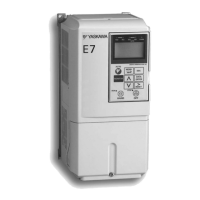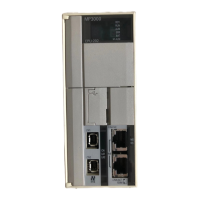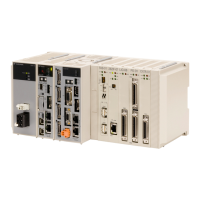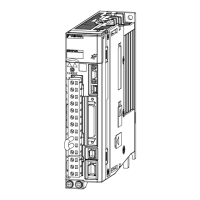6.2 Motor Performance Fine-Tuning
258 YASKAWA ELECTRIC SIEP C710616 35D YASKAWA AC Drive E1000 Technical Manual
6.2 Motor Performance Fine-Tuning
This section offers helpful information for counteracting oscillation, hunting, or other problems that occur while
performing a trial run. Refer to the section below that corresponds to the motor control method used.
Note: This section describes parameters that are commonly edited and may be set incorrectly. Consult Yaskawa for more information
on detailed settings and fine-tuning the drive.
◆ Fine-Tuning V/f Control
Table 6.1 Parameters for Fine-Tuning Performance in V/f
◆ Fine-Tuning Open Loop Vector Control for PM Motors
Table 6.2 Parameters for Fine-Tuning Performance in OLV/PM
Problem
<1> Default setting value is dependent on parameter A1-02, Control Method Selection, and o2-04, Drive Model Selection.
<2> Default settings change when the Control Method is changed (A1-02) or a different V/f pattern is selected using parameter E1-03.
Parameter No. Corrective Action Default
Suggested
Setting
Motor hunting and oscillation at speeds
between 10 and 40 Hz
Hunting Prevention Gain
(n1-02)
• If insufficient motor torque relative to the size of the load causes hunting,
reduce the setting.
• When motor hunting and oscillation occur with a light load, increase the
setting.
• Lower this setting if hunting occurs when using a motor with a relatively
low inductance, such as a high-frequency motor or a motor with a larger
frame size.
1.00 0.10 to 2.00
• Motor noise
• Motor hunting and oscillation at
speeds up to 40 Hz
Carrier Frequency Selection
(C6-02)
• If the motor noise is too loud, increase the carrier frequency.
• When motor hunting and oscillation occur at speeds up to 40 Hz, lower
the carrier frequency.
• The default setting for the carrier frequency depends on the drive
capacity (o2-04).
1 (2 kHz) 1 to max. setting
• Poor torque or speed response
• Motor hunting and oscillation
Torque Compensation Primary
Delay Time
(C4-02)
• If motor torque and speed response are too slow, decrease the setting.
• If motor hunting and oscillation occur, increase the setting.
200 ms
<1> 100 to 1000 ms
• Poor motor torque at speeds below 10
Hz
• Motor hunting and oscillation
Torque Compensation Gain
(C4-01)
• If motor torque is insufficient at speeds below 10 Hz, increase the setting.
• If motor hunting and oscillation with a relatively light load, decrease the
setting.
1.00 0.50 to 1.50
• Poor motor torque at low speeds
• Motor instability at motor start
Mid Output Voltage A (E1-08)
Minimum Output Voltage
(E1-10)
• If torque is insufficient at speeds below 10 Hz, increase the setting.
• If motor instability occurs at motor start, decrease the setting.
Note: The recommended setting value is for 200 V class drives. Double this
value when using a 400 V class drive.
E1-08: 15.0 V
E1-10: 9.0 V
<2>
Default setting
±5 V
Problem Parameter No. Corrective Action Default
Suggested
Setting
Motor performance not as desired
Motor parameters
(E1-, E5-)
• Check the settings for base and maximum frequency in the E1-
parameters
• Check E5- parameters and make sure all motor data has been set
correctly. Be careful not to enter line to line data where single-phase data
is required, and vice versa.
• Perform Auto-Tuning.
––
Poor motor torque and speed response
Load Inertia Ratio (n8-55) Adjust parameter n8-55 to meet the load inertia ratio of the machine. 0
Close to the actual
load inertia ratio
Speed Feedback Detection Gain
(n8-45)
Increase the speed feedback detection gain (n8-45). 0.8
Increase in
increments of 0.05
Torque Compensation (C4-01)
Enable torque compensation.
Note: Setting this value too high can cause overcompensation and motor
oscillation.
01
Oscillation at start or the motor stalls
Pull-In Current during Accel/
Decel (n8-51)
Increase the pull-in current set in n8-51 50%
Increase in steps
of 5%
DC Injection Braking Current
(b2-02), DC Injection Time at
Start (b2-03)
Use DC Injection Braking at start to align the rotor. Be aware that this
operation can cause a short reverse rotation at start.
b2-02 = 50%
b2-03 = 0.0 s
b2-03 = 0.5 s
Increase b2-02 if
needed
Load Inertia Ratio (n8-55)
Increase the load inertia ratio.
Note: Setting this value too high can cause overcompensation and motor
oscillation.
0
Close to the actual
load inertia ratio
Stalling or oscillation occur when load
is applied during constant speed
Pull-In Current Compensation
Time Constant (n8-47)
Decrease n8-47 if hunting occurs during constant speed 5.0 s
Reduce in
increments of 0.2 s
Pull-In Current (n8-48) Increase the pull-in current in n8-48. 30%
Increase in
increments of 5%
Load Inertia Ratio (n8-55) Increase the load inertia ratio. 0
Close to the actual
load inertia ratio
Hunting or oscillation occur
Speed feedback Detection Gain
(n8-45)
Decrease the speed feedback detection gain in n8-45. 0.8
Increase in
increments 0.05
STO fault trips even if the load is not
too high
Induced Voltage Constant (E5-09
or E5-24)
• Check and adjust the induced voltage constant.
• Check the motor name plate, the data sheet or contact the motor
manufacturer for getting data.
dep. on drive
capacity and
motor code
Refer to the motor
data sheet o
r the
nameplate.
SIEP_C710616_35.book 258 ページ 2015年11月30日 月曜日 午後2時2分
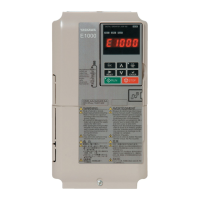
